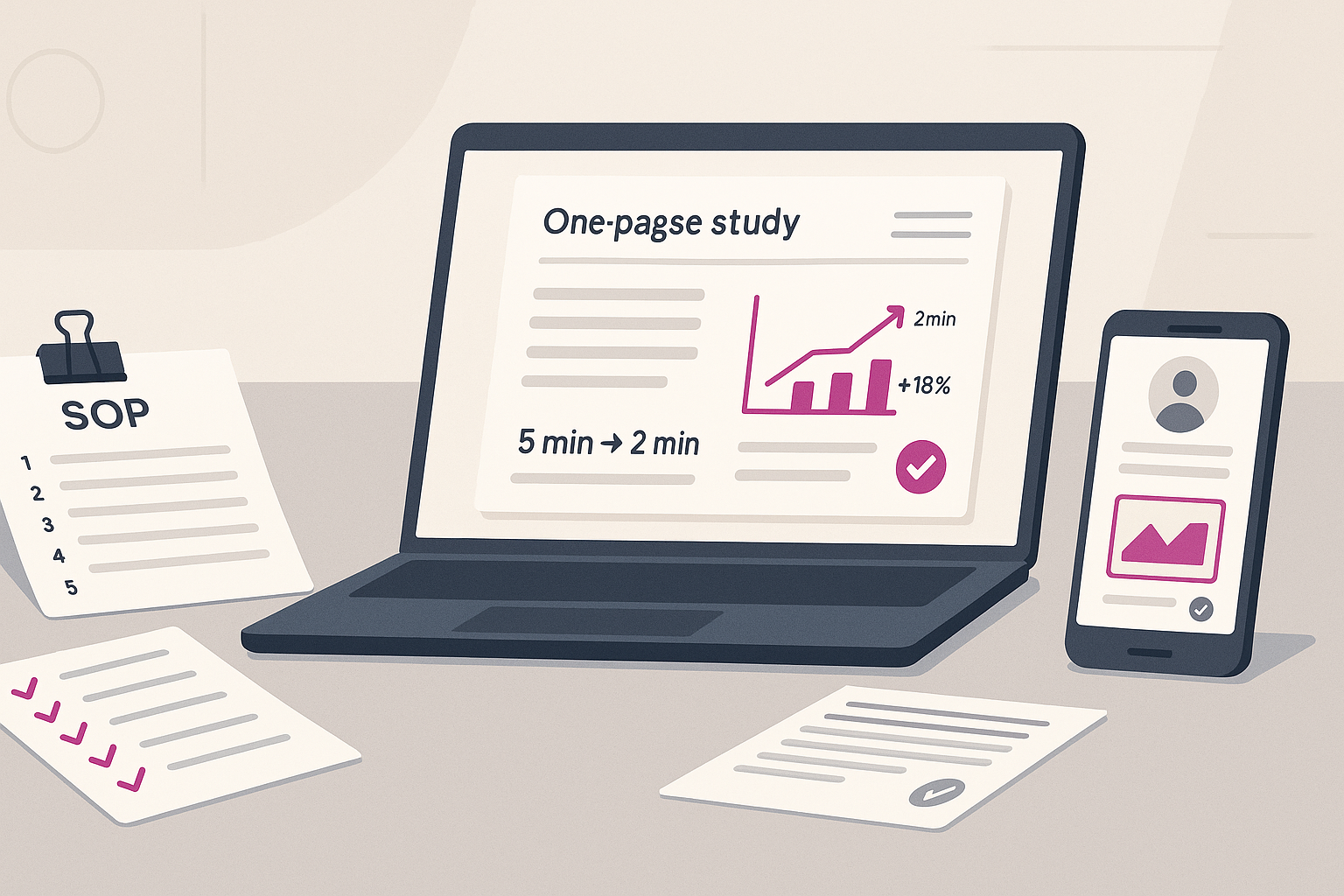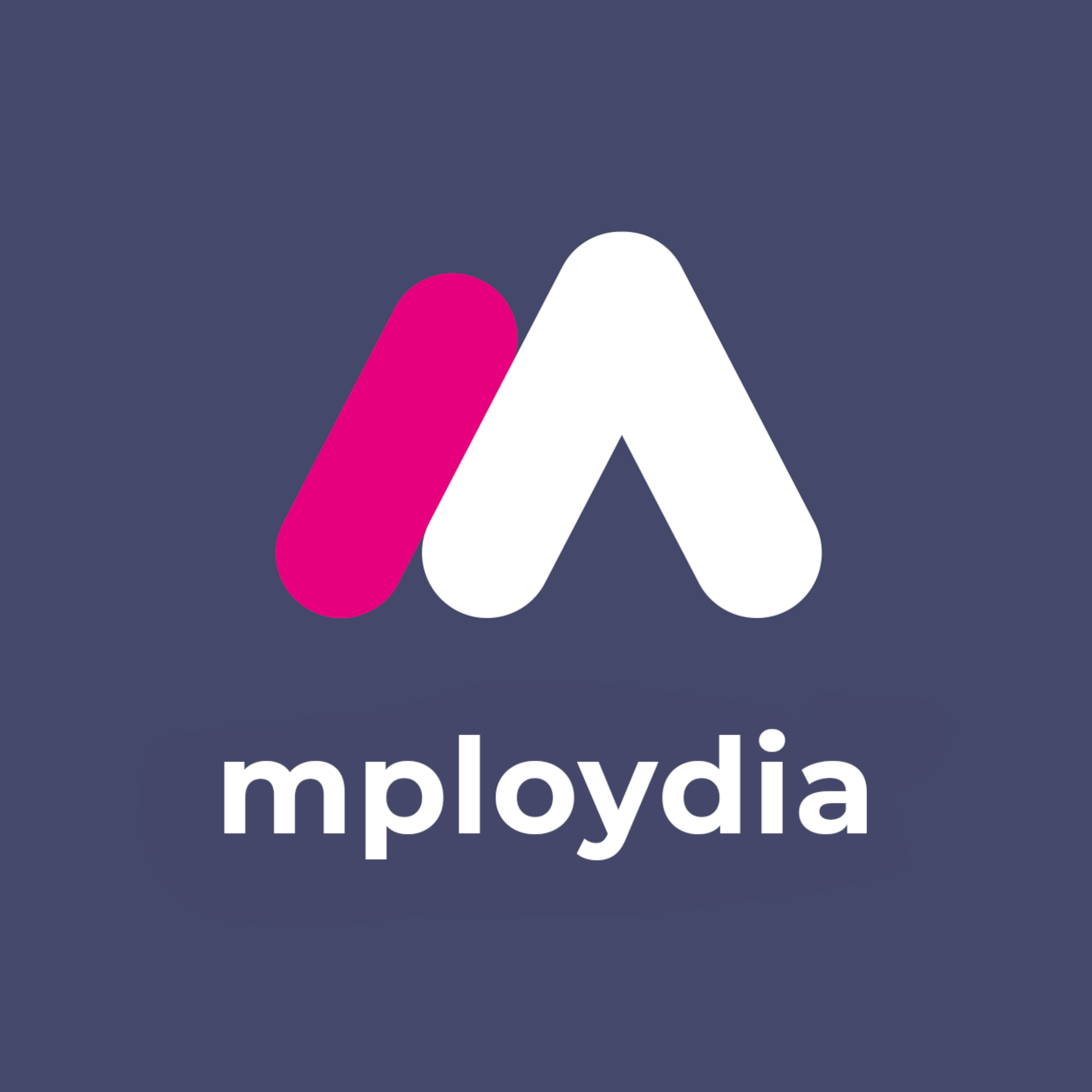
Work-Ready Signals Employers Trust [Tactics That Prove It]
If a hiring manager gives your CV 12 seconds, what survives that blink is not your charm, your degree or your potential. What survives are signals. Evidence. Fast, low-risk reasons to believe you can do the job on Monday. If you do not put those signals in front of them, you are invisible. That is the brutal truth. The good news is you can manufacture trust. Not with fluff. With work-ready signals that compress a year of experience into a week of proof. This is your playbook.
What work-ready signals actually are
Work-ready signals are visible, verifiable, recent and relevant proof that you can create value under real-world constraints. They tell a hiring manager you will not melt on day one. Decades of research on signalling in labour markets says people do not buy claims. They buy credible signals that lower uncertainty. In today’s flooded inboxes, signals beat CVs stuffed with adjectives.
The Signal Quality Framework: The 5 Rs
A strong work-ready signal scores high on five dimensions:
- Relevant: Directly tied to the job’s tasks, tools or outcomes.
- Real: Verifiable by a link, a file, a third party or a timestamp.
- Recent: Created in the last 6 to 12 months.
- Results: Shows an outcome, metric, or change from before to after.
- Referenced: Endorsed by someone credible or anchored to a recognised standard.
Weak signals are the opposite. Vague. Unverifiable. Old. Process, not outcome. Self-referential. Stop producing those.
Signals employers trust more than claims
High-trust examples:
- A working prototype, repo or portfolio page with commit history.
- A quantified outcome from a mini-project with before and after.
- A third-party assessment score with proctored verification.
- A short case study with data, screenshots and a client quote.
- A referral email from a credible manager who saw you work.
Low-trust examples:
- “I am a team player and fast learner.”
- “Responsible for…” with no result.
- Certificates with no assessment or hands-on output.
- Unverified testimonials with no names or links.
- Coursework lists with no artefacts or metrics.
Your job is simple. Replace low-trust noise with high-trust proof.
The 14 highest-value work-ready signals for first-time jobseekers
Below are practical signals you can create even without formal experience. Each includes what it is, how to build it fast and how to package it so hiring managers notice.
1) One-Page Case Study With Metrics
What it is: A tight before-and-after story on a real problem you solved. Shows thinking, execution and result. One page, not a novel.
How to build:
- Find a local business, charity, society or side project.
- Pick one problem. Example: shorten response time, improve sign-ups, fix a process, cut errors.
- Capture baseline, make a change, measure outcome over 1 to 2 weeks.
Proof format: PDF or webpage with context, actions, metrics, screenshots and a quote.
2) Public Work Sample Pack
What it is: A bundle of 3 to 5 relevant artefacts for the role. For sales, include a cold email, a call script, a CRM note. For ops, include a SOP, a checklist and a tracker.
How to build:
- Identify recurring tasks in target job ads.
- Produce realistic samples with dummy data.
- Put in a folder or page. Label each clearly.
Proof format: Shared drive or portfolio link with a short intro.
3) Time-to-Value Plan for Your First 30-60-90 Days
What it is: A simple plan that shows you understand priorities, learning curve and impact milestones.
How to build:
- Read 10 job ads for the role. Extract common objectives and tools.
- Draft a one-page plan with three columns: Learn, Deliver, Measure.
Proof format: One-page PDF with specific deliverables and metrics.
4) Skills-in-Action Video
What it is: A 2 to 3 minute screen recording or phone video showing you completing a task with commentary on decisions.
How to build:
- Choose one task the job requires.
- Record step-by-step. Narrate decisions, trade-offs and checks.
Proof format: Unlisted video link. Include a brief description and timestamped highlights.
5) Manager-Grade Reference With Proof
What it is: A short written reference that cites a specific deliverable with evidence.
How to build:
- Support a community or student project for a week.
- Ask the organiser for a paragraph referencing a specific result. Attach the artefact.
Proof format: Screenshot or PDF of the reference plus the linked output.
6) Proctored Assessment Score With Context
What it is: A verified test result aligned to the job’s tools or skills.
How to build:
- Pick assessments with identity verification and time limits.
- Sit the assessment and screenshot results. Map score to job tasks.
Proof format: Badge or certificate with verification link and a note on what the test covered.
7) Portfolio of Micro-Projects With Real Constraints
What it is: Three small projects built under time, data or resource limits.
How to build:
- Set a constraint for each micro-project. Example: 48 hours, public dataset, free tools only.
- Document goals, constraints, decisions and outcome.
Proof format: Portfolio page with a 3-sentence summary per project and links to artefacts.
8) Customer or User Testimonial With Before-and-After
What it is: A named quote from someone who benefited, plus a metric.
How to build:
- Offer a small fix to a student group, charity or micro-business.
- Request a quote that mentions the change and number.
Proof format: Quote with name, role, date and a link to the outcome.
9) Process Improvement SOP With Measured Impact
What it is: A simple standard operating procedure that eliminates waste and shows time saved.
How to build:
- Identify a repetitive process. Map the steps. Remove friction.
- Time the process before and after.
Proof format: One-page SOP with a time saving delta and a checklist.
10) Data Story With Visuals and Decision
What it is: A single-page narrative that turns messy data into a decision a manager can act on today.
How to build:
- Use a public dataset. Define one question.
- Clean, analyse and visualise. Write the decision and risk.
Proof format: One-page slide or blog section with the chart and recommendation.
11) Communication Pack: Email, Note, Update
What it is: Three examples that prove clarity and professionalism.
How to build:
- Write a status update, a stakeholder email and meeting notes from a mock scenario.
- Keep it concise. Use British spelling and correct formatting.
Proof format: PDF or webpage with each sample separately titled.
12) Reliability Log
What it is: A visible streak of consistent delivery against weekly commitments.
How to build:
- Set a weekly deliverable on your portfolio. Ship it for 8 weeks.
- Timestamp each update. Add a short summary.
Proof format: Portfolio section titled Reliability with dates and deliverables.
13) Outreach-to-Interview Conversion Proof
What it is: A simple metric that proves your approach wins attention.
How to build:
- Send 20 targeted outreach messages with tailored value.
- Track replies and interviews booked.
Proof format: Screenshot of your tracker and two redacted winning messages.
14) Tool Proficiency Map With Artefacts
What it is: A list of job-relevant tools linked to evidence, not just logos.
How to build:
- For each tool, attach a file, a repo, or a screenshot that proves you used it to deliver something.
- Proof format: One-page matrix linking tools to outputs and results.
Turn your CV into a signal engine
A CV is not useless. It is incomplete until it points to proof. Make it a table of contents of evidence.
- Replace duties with impact statements and links. “Built a customer FAQ that cut repeat emails by 18 percent in two weeks. Link.”
- Reorder sections so signals sit at the top. Portfolio link, best case study, assessment badge.
- Create a Projects section. Keep it tight. Three bullets each. One line for the result with a number.
- Add a Skills section that maps to artefacts. Not a laundry list. Example: “Excel to build a demand forecast. Sample file.”
- Trim filler adjectives. If it is not linked to a result, delete it.
The 14-day work-ready sprint
No experience is not a fixed state. In 14 days you can build enough proof to move from ignored to shortlisted.
- Day 1: Choose a role and niche. Extract top 10 tasks and tools from 10 job ads. Build a one-page role map.
- Day 2: Select three micro-projects that align to the top tasks. Define constraints, outcomes and deadlines.
- Day 3: Build micro-project 1. Document decisions and baseline.
- Day 4: Finish micro-project 1. Produce one-page case study and artefacts.
- Day 5: Build micro-project 2. Include a communication element like a stakeholder email.
- Day 6: Finish micro-project 2. Create a skills-in-action video.
- Day 7: Sit one proctored assessment relevant to the role. Save the verification.
- Day 8: Build micro-project 3. Aim for a measurable outcome in 48 hours.
- Day 9: Finish micro-project 3. Draft your 30-60-90 plan.
- Day 10: Package everything into a clean portfolio page. Add your reliability log section and first entry.
- Day 11: Write two targeted outreach messages that include a link to the most relevant case study.
- Day 12: Send 20 targeted messages. Track replies and interviews booked.
- Day 13: Refine CV to point to your strongest signals. Cut fluff and add links.
- Day 14: Rehearse two-minute walkthroughs for each artefact. Prepare your interview signal script.
How to present signals in interviews without bragging
Use a simple pattern. Problem. Action. Result. Proof. Then pause.
- Open: “To show how I handle X, here is a 60-second example.”
- Problem: “The process took 5 minutes per ticket and caused backlogs.”
- Action: “I mapped the steps, removed two checks, created a one-page SOP.”
- Result: “Time fell to 2 minutes. We cleared 40 tickets in the first week.”
- Proof: “Here is the SOP and the log. Would you like a quick look?”
Attach a short leave-behind after the call. A one-page plan or a lo-fi prototype aligned to their context. Never leave them with only a nice chat.
Signal hygiene: curate your public footprint
Small details betray readiness. Audit your surfaces.
LinkedIn top card
- Headline: Role target plus value. Example: “Junior Operations Analyst. I optimise processes with data and clear SOPs.”
- About: 3 lines. Who you help, how you deliver, proof link.
- Featured: Pin your best case study and skills-in-action video.
GitHub or Repo
- Pin three projects. Clean README. Installation steps. Screenshots.
- Write short changelogs. Add a clear licence and contact email.
Portfolio site
- One page. Hero statement. Three strongest signals. Clean navigation.
- Include a contact form that works. Test it.
Content consistency
- Name, email and phone must match across all surfaces.
- Turn off edgy usernames. Use firstname.lastname email if possible.
Templates you can use now
30-60-90 Day Plan Skeleton
- 30 Days: Learn top 3 systems. Ship quick win A. Metric: X.
- 60 Days: Own process B. Ship improvement C. Metric: Y.
- 90 Days: Automate step D. Reduce cost or time by Z. Metric: Z.
One-Page Case Study Outline
- Context: Who, what, baseline metric.
- Constraints: Time, data, tools, access.
- Actions: 3 to 5 bullet steps with decisions.
- Result: 1 to 2 metrics with a before-and-after.
- Proof: Links, screenshots, quote.
Targeted Outreach Message
- Subject: Small idea for [Company]’s [team or goal]
- Body: One sentence on what you noticed. One sentence on the small win you can deliver. Link to a 1-page case study solving a similar problem. Close with a specific ask for 15 minutes to discuss.
Interview Leave-Behind
- Title: “First 30 days to reduce X by Y.”
- Three bullets on actions. One small mock-up or screenshot. One metric to track. Your contact details.
Map signals to common entry-level roles
Operations and customer support
- Signals to build: SOP with measured time saved. Ticket response template. Reliability log.
- Tools to show: Excel or Google Sheets, ticket system basics, documentation platform.
- Metrics to hit: First response time, resolution time, error rate.
Marketing and content
- Signals to build: Content calendar with execution logs. A-B test of headlines. Analytics snapshot with interpretation.
- Tools to show: CMS, email tool, basic analytics, design tool.
- Metrics to hit: CTR, conversions, organic growth.
Sales and business development
- Signals to build: Cold email with 20 percent reply rate on a sample list. Call script with objection handling. CRM hygiene screenshot.
- Tools to show: CRM basics, email sequencing, lead research.
- Metrics to hit: Reply rate, meetings booked, pipeline value.
Data and analysis
- Signals to build: One-page decision memo from a dataset. Clean repo with notebook. Dashboard screenshot.
- Tools to show: Excel, SQL basics, visualisation tool.
- Metrics to hit: Time-to-insight, accuracy, business action enabled.
Product or project support
- Signals to build: Prioritised backlog. Risk log. Retrospective note with action items.
- Tools to show: Ticketing, boards, documentation.
- Metrics to hit: Cycle time, on-time delivery, stakeholder satisfaction.
How to maintain momentum after you ship your first signals
- Set a weekly shipping slot. Protect it. Deliver one new artefact each week.
- Rotate your signals. One week on outputs, next on outcomes, next on communication, next on reliability.
- Recycle and improve. Replace weaker signals with stronger ones as you learn.
- Track signal performance. Which links get clicks. Which artefacts get mentions. Double down on those.
Avoid these common signal-killers
- Overproduced, under-relevant portfolios. Your design flourishes do not matter if the content is off-target.
- Ten certificates with no outputs. One verified, hands-on assessment beats ten view-only PDFs.
- Messy links that do not open or require a login. Test everything in incognito.
- Old student projects with no updates. Refresh or archive them.
- Claims with no dates, no numbers, no names. If it cannot be checked, it does not count.
What hiring managers really screen for in seconds
They are not trying to be unfair. They are trying to de-risk. In their first pass they look for:
- Fast evidence that you understand the job-to-be-done.
- Proof you can communicate succinctly and professionally.
- Signs you finish things. Not just start them.
- One or two numbers that show you think in outcomes.
- A credible human who would vouch for you.
Give them those in the top third of your CV and the first 10 seconds of your LinkedIn profile. You will feel the difference in callbacks.
Subtle proof beats loud potential
Potential without proof is a promise. Subtle, sharp proof wins. A screenshot of a dashboard with a clear number. A one-page plan someone could implement tomorrow. A video of your working process. These are small, sharp knives in a world of blunt objects. Use them.
The research footnote you should know, then ignore
Labour market signalling is a well-established concept. The short version is simple. Employers use observable signals to infer ability when information is imperfect. That is your operating system. You do not need to debate it. You need to exploit it. Build the right signals and you change how you are perceived.
A high-level implementation plan
- Define: Choose one role, one niche, and the top 10 tasks from job ads.
- Build: Create three micro-projects and one case study in 7 days.
- Package: Assemble a one-page portfolio and a 30-60-90 plan.
- Deploy: Update CV and LinkedIn. Send 20 targeted outreaches.
- Iterate: Ship one new or improved signal every week for 8 weeks.
Final word
Stop telling people you are ready. Show them in ways they cannot ignore. Work-ready signals turn strangers into believers and interviews into offers. They do not require permission, pedigree or years. They require focus and the courage to ship. Start today. Ship something small. Measure it. Publish it. That is how you cross the line from applicant to hire.
Next Steps
Want to learn more? Check out these articles:
Evidence-Led Interview Answers That Secure Offers [Tactics]
Proof Over Buzzwords: 8 Practical Ways Graduates Prove Value
ATS Keywords Without Fluff [A Tactical CV Optimisation Guide]
Check out our Advanced Employability Course for all the help you need to get your dream job, fast.


